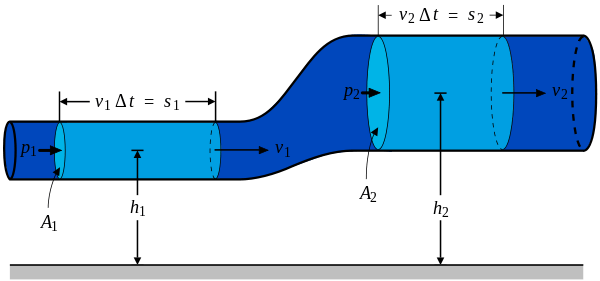Circulation (fluid dynamics)
| Continuum mechanics | ||||
|---|---|---|---|---|
 | ||||
|
Laws
|
||||

In fluid dynamics, circulation is the line integral around a closed curve of the velocity field. Circulation is normally denoted Γ (Greek uppercase gamma). Circulation was first used independently by Frederick Lanchester, Wilhelm Kutta, and Nikolai Zhukovsky.
Definition
If V is the fluid velocity on a small element of a defined curve, and dl is a vector representing the differential length of that small element, the contribution of that differential length to circulation is dΓ:
where θ is the angle between the vectors V and dl.
The circulation around a closed curve C is the line integral:[1]
The dimensions of circulation are length squared, divided by time; L2⋅T−1, which is equivalent to velocity times length.
Kutta–Joukowski theorem
The lift per unit span (L') acting on a body in a two-dimensional inviscid flow field can be expressed as the product of the circulation Γ about the body, the fluid density ρ, and the speed of the body relative to the free-stream V. Thus,
This is known as the Kutta–Joukowski theorem.[2]
This equation applies around airfoils, where the circulation is generated by airfoil action, and around spinning objects, experiencing the Magnus effect, where the circulation is induced mechanically.
Circulation is often used in computational fluid dynamics as an intermediate variable to calculate forces on an airfoil or other body. When an airfoil is generating lift the circulation around the airfoil is finite, and is related to the vorticity of the boundary layer. Outside the boundary layer the vorticity is zero everywhere and therefore the circulation is the same around every circuit, regardless of the length of the circumference of the circuit.
Relation to vorticity
Circulation can be related to vorticity:
by Stokes' theorem:
only if the integration path is a boundary (indicated by "∂") of a closed surface S, not just a closed curve. Thus vorticity is the circulation per unit area, taken around an infinitesimal loop. Correspondingly, the flux of vorticity is the circulation.